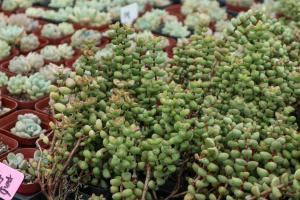Can You Plant Black Eyed Susans in Pots?
Black eyed susans are beautiful and bright flowers that are native to North America. They are a popular choice for gardeners because of their eye-catching colors and their ability to attract pollinators like bees and butterflies. But can you plant black eyed susans in pots?
Choosing the Right Pot
Yes, you can plant black eyed susans in pots, but it’s important to choose the right pot for the job. Black eyed susans are a type of wildflower, so they have deep roots that can grow up to 3 feet long. This means that you need to choose a pot that is at least 12 inches deep and wide enough to accommodate the plant’s growth.
You should also choose a pot that has good drainage, as black eyed susans prefer well-draining soil. If your pot does not have drainage holes, you can drill some in the bottom yourself.
Selecting the Right Soil
The type of soil you choose is also important when planting black eyed susans in pots. These plants prefer well-draining soil that is rich in nutrients, so you should select a potting mix that has perlite or vermiculite to improve drainage and a slow-release fertilizer to provide nutrients over time.
Avoid using garden soil in pots, as it can become compacted and may contain weeds or diseases that can harm your plant.
Planting Black Eyed Susans in Pots
Once you have chosen the right pot and soil, it’s time to plant your black eyed susans. Begin by filling the pot with the potting mix, leaving about 2 inches of space at the top.
Then, remove your black eyed susans from their existing pot, gently loosen the roots, and place them in the new pot. Make sure the roots are covered with soil and that the plant is standing upright.
Water your plant thoroughly after planting, and continue to water it regularly as needed. Black eyed susans prefer moist soil, but they do not like to be waterlogged.
Caring for Black Eyed Susans in Pots
Black eyed susans in pots require the same care as those planted in the ground. They should be planted in a location that receives at least 6 hours of direct sunlight per day.
Fertilize your plant regularly using a slow-release or liquid fertilizer, and deadhead any spent blooms to encourage new growth. If your plant becomes too tall for your pot, you can cut it back by one-third to encourage bushier growth.
Black eyed susans in pots are also prone to pests and diseases like spider mites, aphids, and powdery mildew. To prevent these issues, inspect your plant regularly for signs of damage, and treat any problems promptly using organic pest control methods like neem oil or insecticidal soap.
Conclusion
If you have limited space in your garden or want to grow black eyed susans on your patio or balcony, planting them in pots is a great option. With the right pot and soil, plus proper care and attention, your black eyed susans will thrive and add color and beauty to your space.

 how many times do yo...
how many times do yo... how many planted tre...
how many planted tre... how many pine trees ...
how many pine trees ... how many pecan trees...
how many pecan trees... how many plants comp...
how many plants comp... how many plants can ...
how many plants can ... how many plants and ...
how many plants and ... how many pepper plan...
how many pepper plan...































